ABOUT.
BELOW
KNEE
COVERS
About alleles below knee leg covers
The ALLELES Below Knee (BK) cover has been developed over the past few years with feedback from clinicians and clients alike to provide what we call a “prosthetically correct” look that works with your clients socket geometry, and restores the silhouette of the leg. One of the main benefits of an ALLELES BK cover is the ability for clinicians to make small modifications to the cover for a more customized fit.
We have tried to make measuring as quick and intuitive as possible, needing only the length and circumference to manufacture the cover. This makes ALLELES Below Knee covers a low time investment option for many clinicians, and an exciting finishing touch for their clients!
how to measure A BELOW knee cover
Our Below Knee Covers require two main measurements: The Length and Circumference.
length
The Length Measurement is taken from the Patellar Bar area of the knee, all the way down to the top of the footshell.
Using this as a starting point, remove half an inch to an inch to ensure that there will be a gap between the bottom of the cover and the top of the footshell. Typically, if the patient’s ankle is more dynamic, you will want to remove the full inch, whereas less mobile ankles will be fine with a half inch gap.
Keep in mind that the length measurement you provide will be the length that is manufactured, so please remove the gap before recording it in your order.
circumference

For the Circumference Measurement, please measure roughly 4-5 inches below the Patellar Bar.
If your client wears a suspension sleeve, please measure over top of the suspension sleeve as it does add to the overall circumference measurement.
To ensure that the cover sits properly around the socket, this measurement will be used to create the inside circumference of your patient’s cover. Remember the cover is a hard plastic shell going over a hard socket. While we have worked hard on the BK shape to create as little bulk as possible, if your patient’s socket is already larger than their sound limb, the cover may restore shape & encourage symmetry, but will add size to the socket
back shapes for below knee covers
There are two back shape options for ALLELES Below Knee Covers: Racer Back and Sport Back. Though the Racer back has more coverage, neither back shape is fully enclosed down to the ankle. The shapes were strategically created not to interfere with the foot components, therefore allowing us to offer our covers to a wider range of clients. If we were to encompass or fully enclose the ankle, it creates excess bulk and causes the cover to lose its anatomical shape.
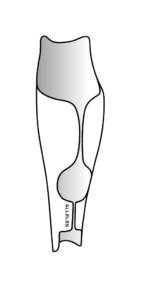
The Racer Back has ankle tabs for a more complete silhouette.
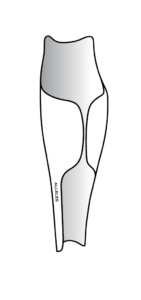
The Sport Back features an open ankle which allows for larger, more dynamic foot components.
Below knee cover adjustments
Based on extensive feedback from patients and clinicians, we have identified a few circumstances that require additional information for Below Knee clients.
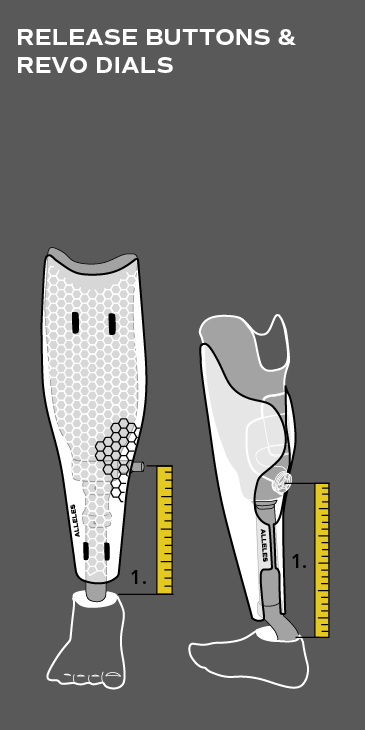
If you have a Release Button, Release Valve, Pinlock Button, or any geometry that protrudes out from the pylon or socket that could interfere with the cover, please include the additional information listed below in your order:
• (1) Measure from top of the footshell to center of release button;
• (2) Include if button placement is: Medial, Lateral, or Posterior.
We will adjust the artwork on the cover and remove perforations in that general area. No access holes will be manufactured on the cover. Adjustments ensure any holes drilled into the cover won’t affect overall integrity or leave unwanted edges.
**If you have a REVO Socket, covers will work best if the REVO Dial is mounted on the posterior distal end of the sockets. Our covers already have an opening in the back that allows for easy access. If your dial is medial or lateral, or you have any concerns about overall fit, please reach out with photos PRIOR to ordering.

If you have a High Profile, Blade, Microprocessor, or Hydraulic Foot, please include the additional information listed below in your order:
• (1) Measure from Top of Footshell to Top of Foot Unit.
We will make sure to move the bottom strap above the build height of the foot unit so that there is no interference with the functionality of the foot
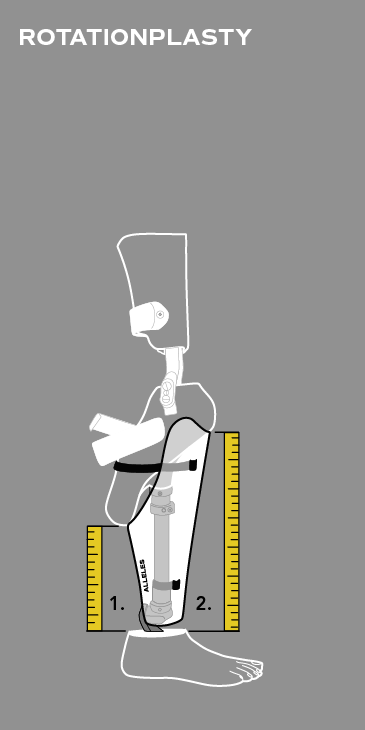
If you have a Rotationplasty Prosthesis, please include the additional information listed below in your order:
• (1) Measure from tip of Pointed Toe to top of footshell;
• (2) Measure from just below the ‘Heel/Knee’ of the socket to the top of the footshell.
We have developed this shape to streamline the geometry of the rotationplasty set-up and make it feel less bulky and in turn more flattering.

Due to the length of a Symes Socket and the tapered shape of our covers near the ankle, we will only make covers for Symes prostheses with the Sport Back.
To help us determine whether our covers will be a good option for the socket shape you are working with, sending photos from the Front, Back, and Sides will help us see what additional adjustments may be required, or if this is a good option for you and your client.
how to put on a below knee cover (Straps)
All of our covers come equipped with two polyurethane straps that secure the cover to the prosthesis. These military grade straps are manufactured in the USA and have proven to be more durable than using a hard connection. Based on years of R&D and user feedback, we have found that hard connections are a reoccurring failure point in the cover. Because the straps have some give, it allows the constant movement created from each step to be dispersed throughout the cover rather than through a rigid connection that would fail over time.
Unlike the AK covers, the majority of the securing comes from the Top Strap on our BK Covers, with the bottom strap acting as a stabilizer. Spread open the cover and put it over top of the prosthesis and slide the cover around so it settles in the position it wants to rest. The top of most BK covers tend to rest just below or at the patellar bar. It is crucial that the top strap is done up first on our Below Knee covers as this is where the majority of the security comes from. It also helps hold the cover as snug to the socket as possible.
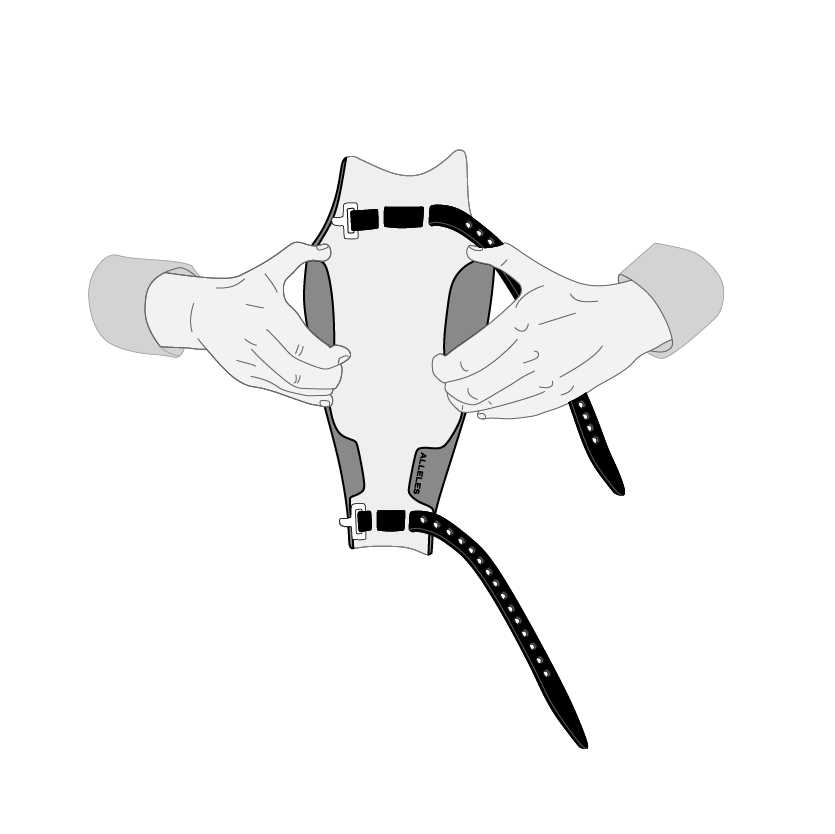
1. Grasp cover by ‘wings’
(covers are slightly flexible)
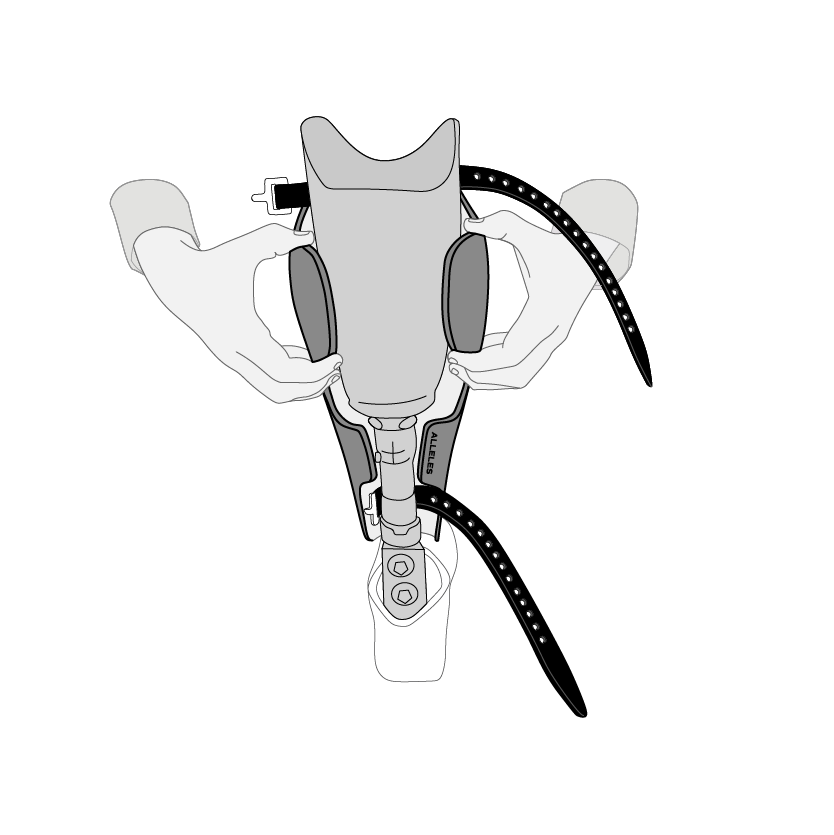
2. Flex cover wide enough
to fit around prosthesis
componentry
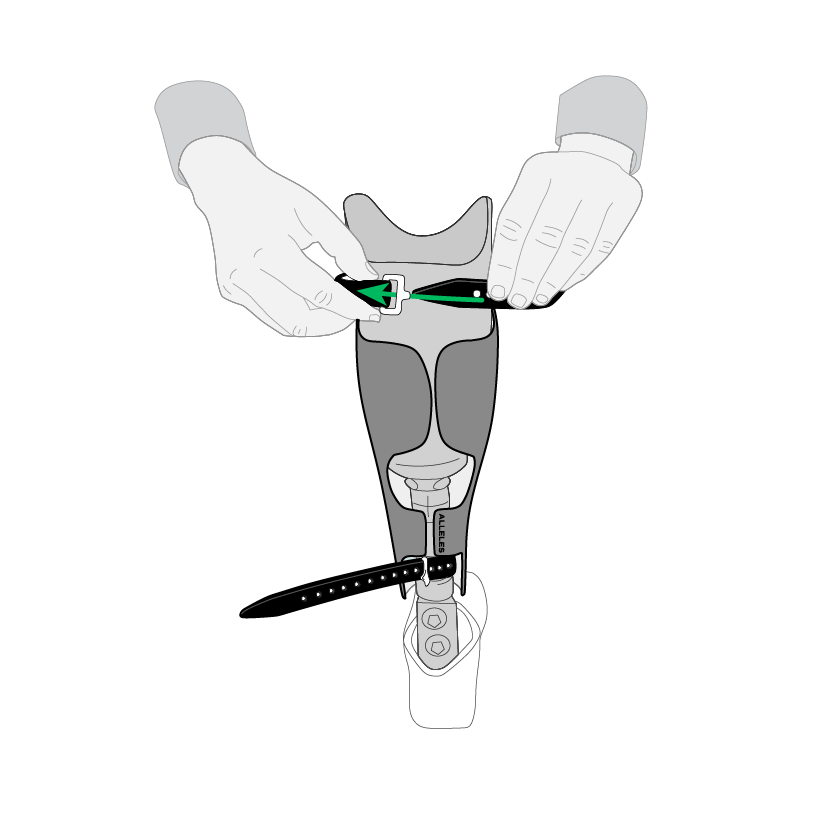
3. Thread strap up through
buckle from underneath
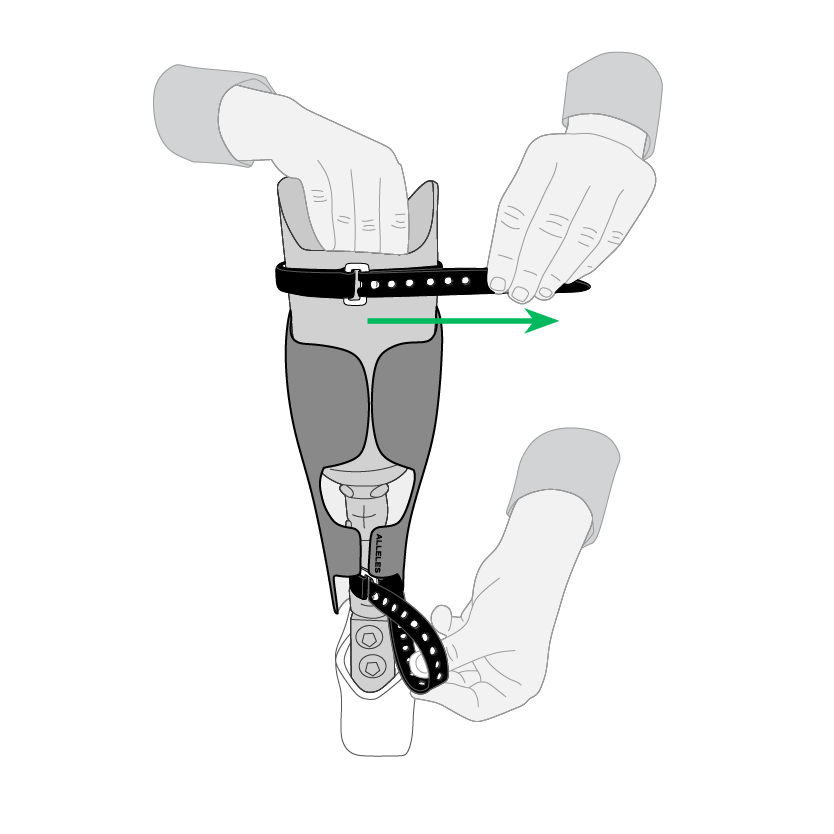
4. Pull strap back overtop
of buckle to engage ‘hook’.
Lastly, Tuck tail into cover or
trim excess once you know
necessary length
below knee straps
tips & tricks
Create a Better Fit: You may notice that once you secure the top strap, the bottom of the cover seems ‘offset’ to the prosthesis, this is completely normal. Since the covers have a linear direction in comparison to many prosthetic alignments, the shape of the cover acts more as a “veil” to the prosthesis behind it, including its alignment. When doing up the bottom strap, do not pull it super tight… This could cause a teetering effect and create larger gaps between the top of the cover and the socket.
Notice what happens to the fit of the cover if you pull the bottom strap super tight. Remember, the bottom strap is only used for stabilizing the cover and does not add much security to the cover staying on. In order to prevent you from pulling the bottom strap too tightly, our covers come with a small foam bumper in the bottom strap to create space between the pylon and the cover.
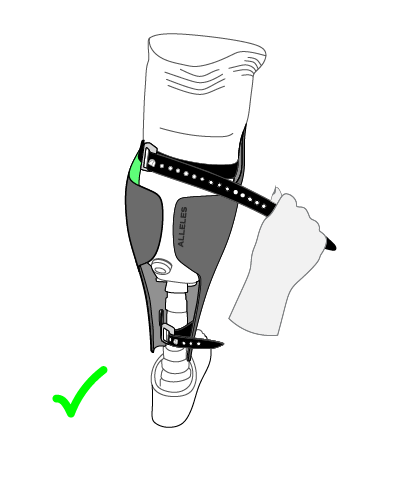
On a BK, the top strap does most of the work when it comes to securing your cover. Always do the top strap up first.

Do not over-tighten the bottom strap. The bottom strap’s primary function is to steady the cover. Over- tightening could cause gapping near the top of the cover.